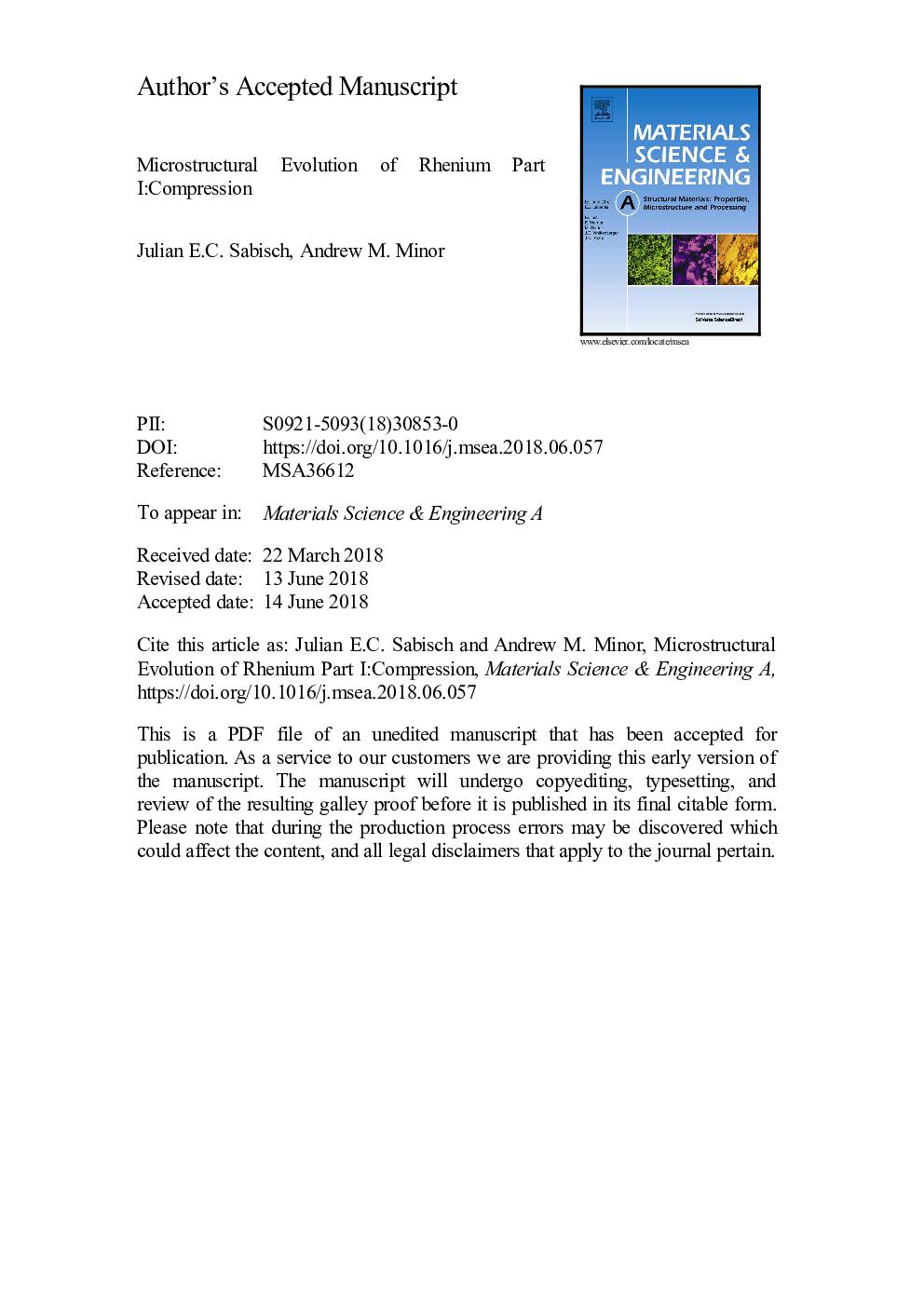| Article ID | Journal | Published Year | Pages | File Type |
|---|---|---|---|---|
| 7971659 | Materials Science and Engineering: A | 2018 | 23 Pages |
Abstract
A comprehensive study of the microstructural evolution of pure rhenium during compression has been conducted using TEM and EBSD analysis. Under compression, slip and dislocation plasticity was predominantly active in the low strain regime, with {112Ì
1}ã112Ì
6ã twinning occurring at all strain amounts and dominating after yield. This is contrary to deformation twins typically being active during the initial low strain regime of twinning dominated metals. It was observed that twins could bypass grain boundaries, as previously reported. In addition, a mechanism of twins “jogging” along the c-axis past twin boundaries was observed using TEM. This mechanism allowed for multiple twin variants to be active within individual grains. Twin “jogging” helps to explain the excellent ductility in rhenium accommodating the lack of dislocation plasticity. Postmortem TEM imaging showed dislocation density steadily increased around the twins, a result of twin boundaries impeding dislocation slip, confirming observations seen in highly work-hardened tension samples. Additionally, dislocation populated twin boundaries have shown {112Ì
1}ã112Ì
6ã type twins resist growing in size when surrounded by dislocations, tending instead to form new twins as strain increases.
Related Topics
Physical Sciences and Engineering
Materials Science
Materials Science (General)
Authors
Julian E.C. Sabisch, Andrew M. Minor,
